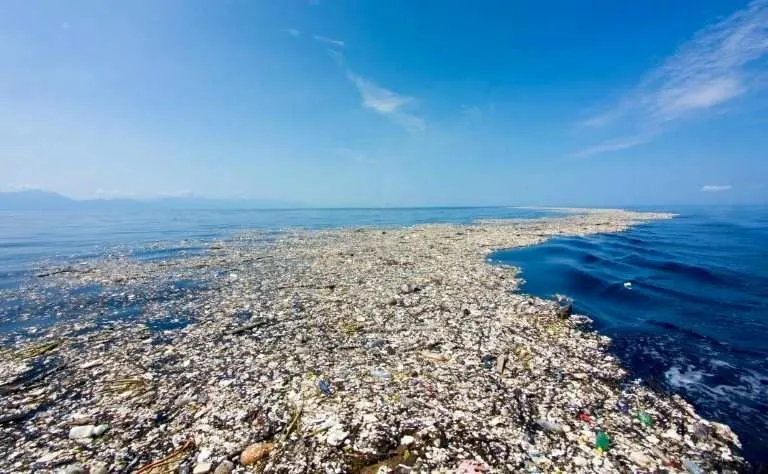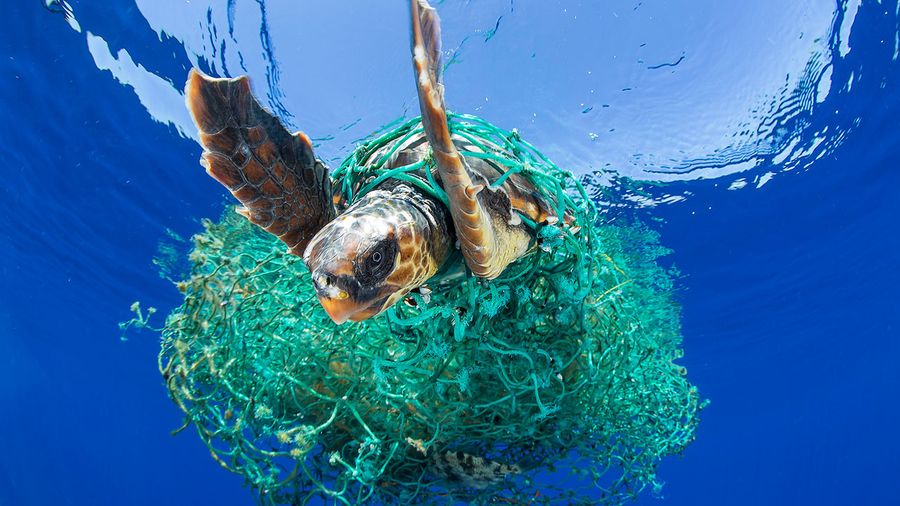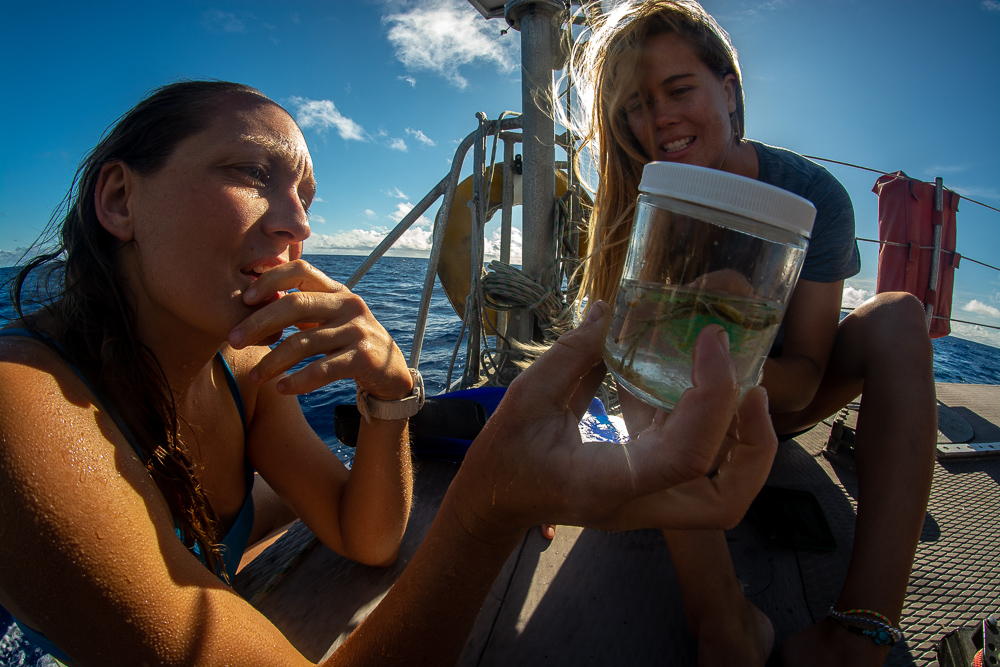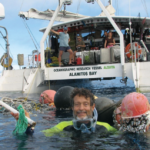As we approach the end of Zero Waste week, we take a minute to reflect on the catastrophic impact excessive waste has on our planet, and especially in our oceans. Gillian acknowledges Captain Charles Moore as an ‘ultimate pioneer’ for discovering the ‘Great Pacific Garbage Patch’ and bravely opening our eyes to the devastation we are creating with our waste.
Captain Charles, although less well-known to some, is more like a modern-day Christopher Columbus, an ultimate pioneer in the traditional sense of the word. Charles Moore was the first to discover the ‘Great Pacific Garbage Patch’ (GPGP), or more accurately described as “The Eastern Pacific Trash Vortex” in 1997.
Charles Moore grew up in California, next to, in and on the Pacific Ocean. He always had a love for the ocean and following graduation he founded Algalita Marine Research Foundation. The foundation is a scientific and educational non-profit organisation, focused on studying and restoring the coastal waters of Southern California. He captains the foundation’s research vessel, the Alguita, and while on a yachting competition in 1997 across the Pacific he discovered a huge water-bound mass of floating plastic. When he returned, he said:
“There were shampoo caps and soap bottles and plastic bags and fishing floats as far as I could see. Here I was in the ocean, and there was nowhere I could go to avoid plastic.”
Captain Charles Moore
In 2016 an Ariel exhibition, confirmed that the Great Pacific Garbage Patch (GPGP) is twice the size of Texas or three times the size of France and that it can be seen from space. I can’t validate the space claim, however there is evidence that in 1999 plastic outweighed the surface waters’ biomass six-to-one. I’m sure it will come as no surprise that the ratio is now much greater and some report that it is 16 times larger than originally thought. Although Charles Moore discovered the GPGP, unfortunately it is not the only collective mass of pollutants in our ocean.

Image source: FORBES
Unlike an image of a huge floating ‘plastic island’, the GPGP is an area where high concentrations of rubbish get sucked into the centre of what’s essentially an inverted whirlpool, known as an ocean gyre. There are 5 gyres – the North Atlantic Gyre, the South Atlantic Gyre, the North Pacific Gyre, the South Pacific Gyre, and the Indian Ocean Gyre. The GPGP (the North Pacific Gyre) is the largest and unfortunately increasing exponentially and at a faster rate than in surrounding waters.
You can’t walk on the GPGP, and like an iceberg, what you can see only tells a small part of the story. Since his discovery in 1997, Charles Moore has been analysing the GPGP and its disastrous effects on ocean life and has made several trips with the Algalita Marine Research Foundation to collect data. From the data collected, it compelled him to direct his career into this field of research. He sensed the potential threat to the marine environment and decided to dedicate his resources and time to understand and raise awareness about ocean plastic pollution, compelling him to embark on a 20-year monitoring expedition of the North Pacific Gyre.

I’m sure many will be thinking the same as I did, why does this happen and what can we do about it?
Many believe that if we can see it, we can remove it, however unfortunately the sheer scale and the concentration of plastic to marine life or biomass would have equally devastating effects on our marine ecosystem. The truth is that plastic pollution such as fishing nets, bottles, caps, toothbrushes and various types and sizes of containers, as well as plastic pallets, are a real threat to all life. The threat starts with marine life at the base of the food chain right up to predator species, this plastic pollution is ingested into the species we eat and is potentially harmful to human health.
A study from scientists at the QUEX Institute found plastic in every seafood sample – 0.04 mg of plastic per gram of tissue in squid, 0.07 mg in prawns, 0.3 mg in crabs and 2.9 mg in sardines. All contained polyvinyl chloride with the largest concentrations of plastic being polyethylene. With roughly 17% of the protein humans consume worldwide being seafood, this means those of us who regularly eat seafood are also regularly eating plastic. I am certainly NOT saying we should stop eating seafood, I am saying we HAVE to stop polluting our oceans.
Charles Moore is actively raising awareness on this issue and through many global appearances, including his recent keynote speech at the Plastic Health Summit in Amsterdam in 2021, he is contributing to a shift in behaviour. By initiating the Plastic Pollution Conservation, he pioneers global awareness and makes it ‘real’ for everyone. He describes this as:
“A disaster that begins at home with carelessly discarded waste that ends up in a place called ‘away’. ‘Away’ is no longer just a nameless place… it’s our oceans.”
Captain Charles Moore
Captain Moore’s most recent expedition was in 2019, where he and his team incorporated three separate projects into one expedition aiming to look at trends in Gyre plastics over a 20-year monitoring program. During this expedition Moore’s team worked with the Korea Broadcasting System to deliver a documentary on their 20 years of research in the Great Pacific Garbage Patch, as well as sample the center of the GPGP. They collected images to compare to those from satellites so that areas of accumulation and the type of debris within that location can be identified and recorded from space. During this expedition Moore and his team also conducted work comparing nano plastics to microplastics to determine whether micro plastic concentrations correspond to the level of nano plastics in the same area.


Captain Charles Moore and his team are currently preparing further ocean voyages of discovery and research to address and highlight the increasing plague of plastic in the ocean.
So with Zero Waste Week coming to a close, it’s the perfect time to ask ourselves that all important question; how do we do our bit? I know I say this all the time, but we all HAVE to be responsible. I will responsibly guide and educate my clients on packaging decisions / selection and consumer communication, I will also encourage all my family, friends and colleagues to act responsibly… What will you do?
Together, we can make a difference.
Thank you Captain Charles Moore for discovering the GPGP and bravely opening our eyes to the devastation we are creating with our waste.
Key takeouts:
- Education: starts with discovery, requires data then we educate the world
- Fact over fiction: data drives everything while fiction / myths create doubt and dilute impact
- Pollution isn’t just ugly: it’s threatening marine life and potentially our own lives
- Be brave: don’t be afraid of uncharted territories
- Passion: one person can make a huge difference
Find out more about the valuable work of the Algalita Marine Research Foundation here.



